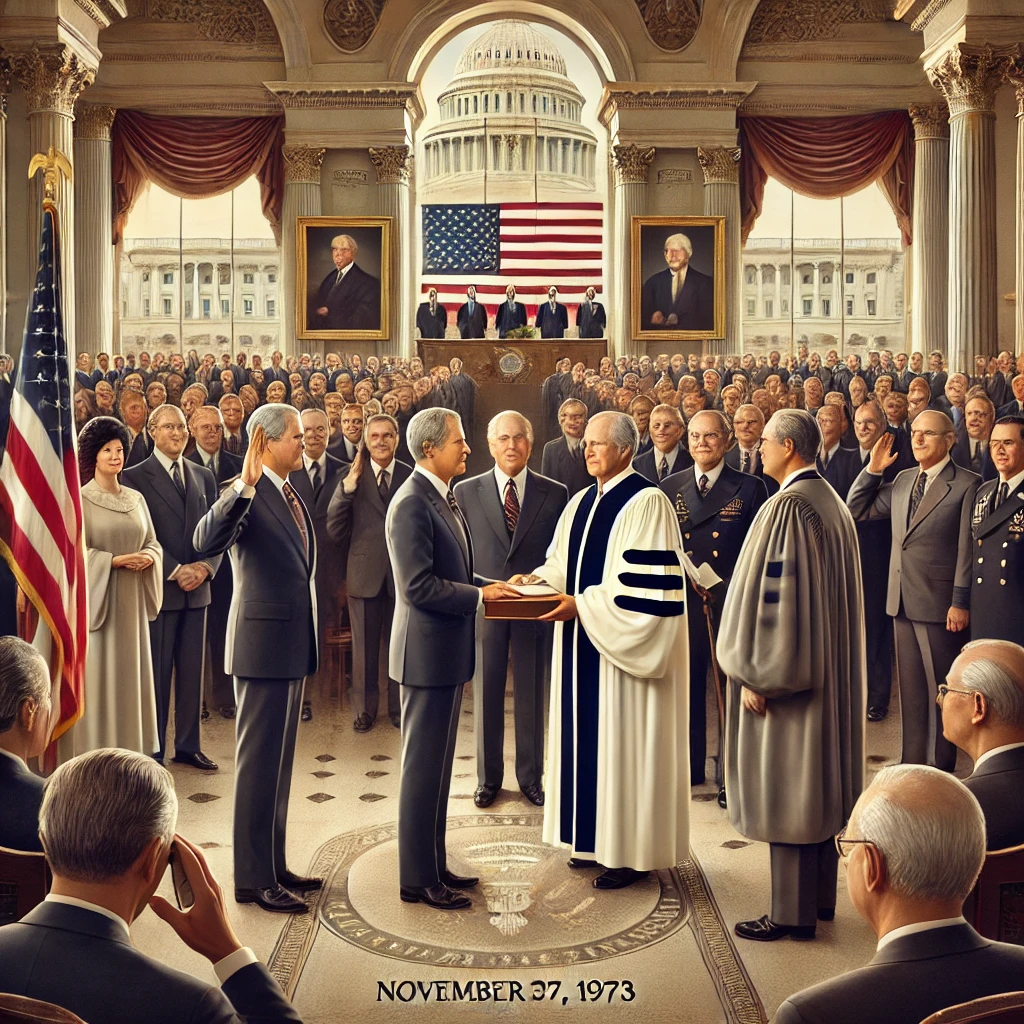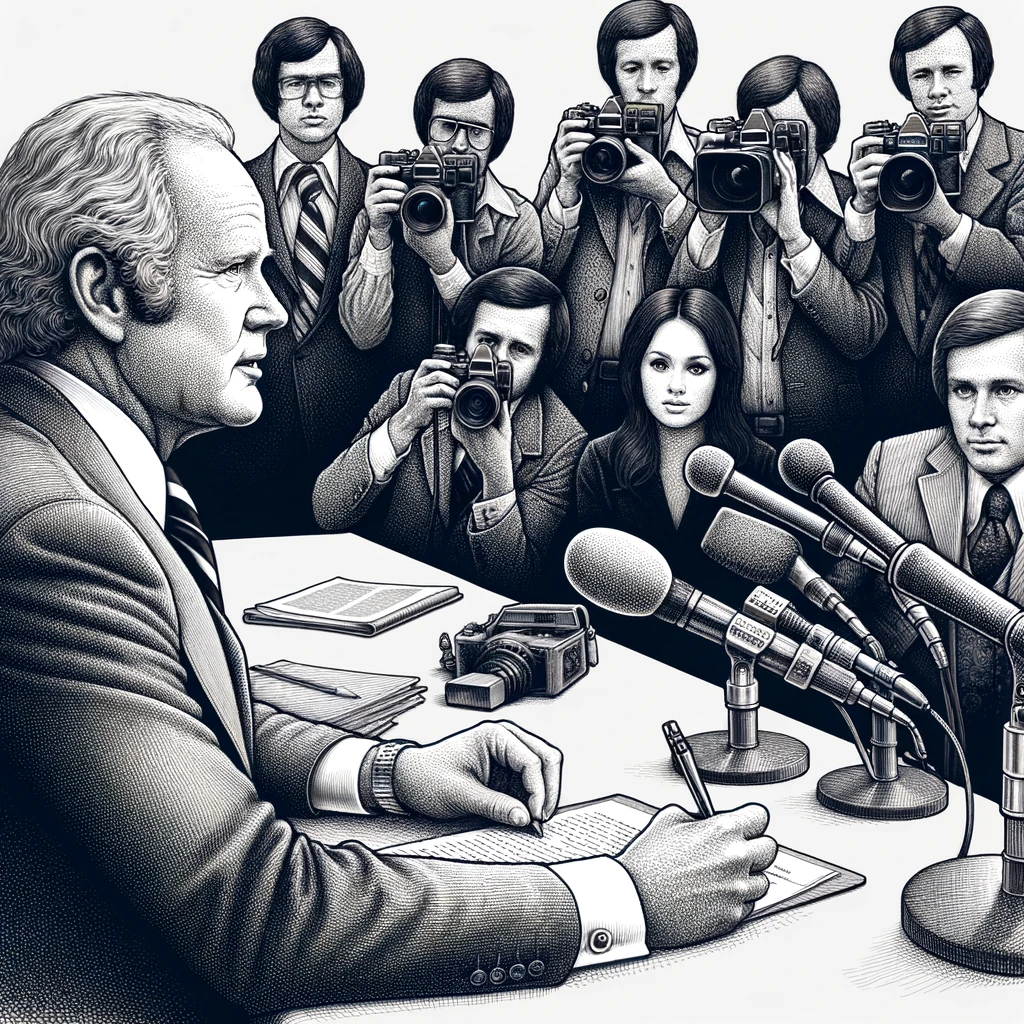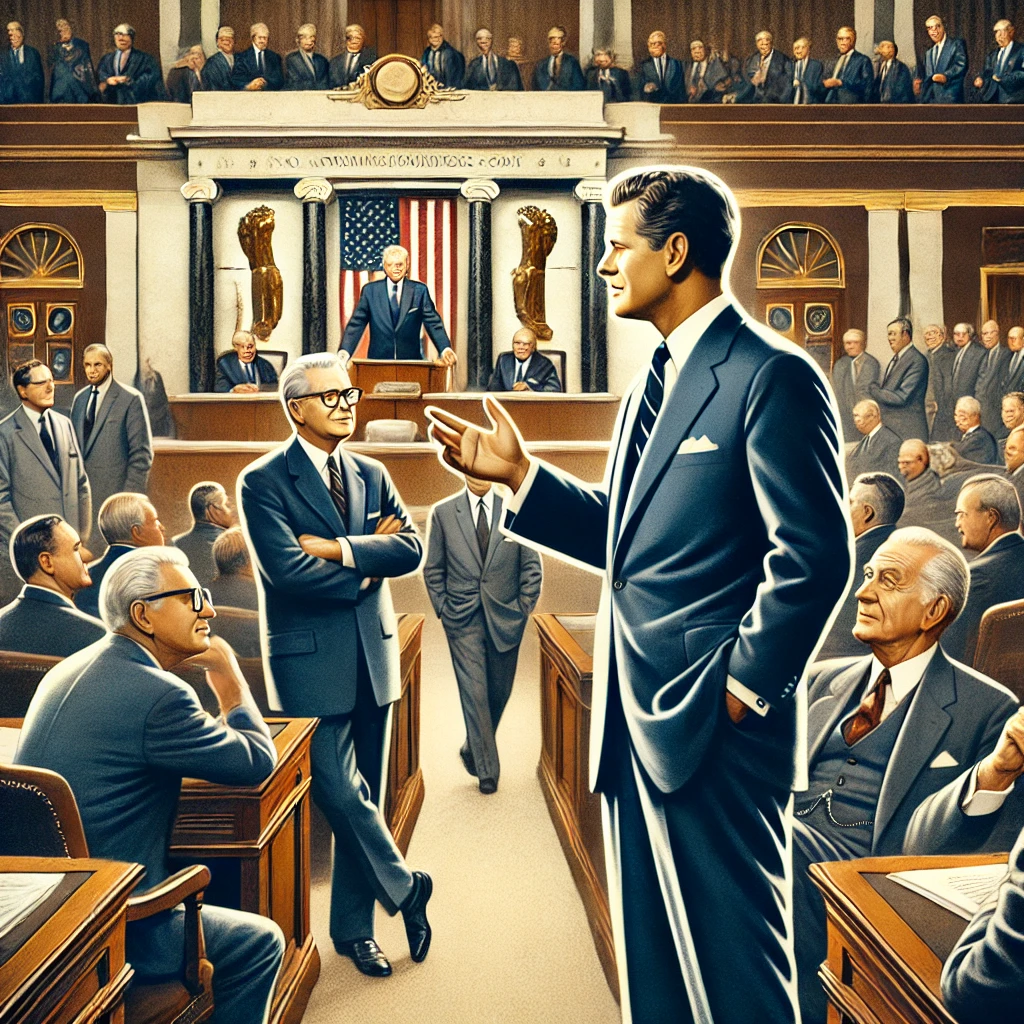On November 27, 1973, the United States Senate confirmed Gerald Ford as Vice President, marking a pivotal moment in American political history. Ford’s confirmation was the first under the 25th Amendment, establishing a process to fill a vacancy in the vice presidency. This event emerged during a turbulent period in American politics, following the resignation of Vice President Spiro Agnew amid charges of tax evasion and corruption.

The Context of Ford’s Confirmation
The 1970s were marked by political scandals and shifting public trust in government. Spiro Agnew’s resignation in October 1973 presented President Richard Nixon with the unprecedented task of nominating a new vice president under the guidelines of the 25th Amendment. Enacted in 1967, the amendment was designed to address concerns about continuity of leadership in the executive branch, but it had never been applied. Ford, then House Minority Leader, was selected by Nixon for his bipartisan reputation and steady leadership.
Ford’s confirmation process was swift but rigorous, as the nation faced the dual crises of Watergate and a vice presidential vacancy. With growing distrust in Nixon’s administration, lawmakers across the aisle emphasized the need for a candidate with integrity and transparency. After thorough vetting and bipartisan support, the Senate voted overwhelmingly—92 to 3—in favor of Ford’s appointment.

Restoring Trust in Leadership
Gerald Ford’s confirmation came at a time when public trust in government was eroding. The Watergate scandal had cast a shadow over the Nixon administration, and Spiro Agnew’s resignation further fueled doubts about the integrity of national leadership. By nominating Ford, a widely respected and uncontroversial figure, Nixon sought to restore some measure of confidence in the executive branch.
Ford’s reputation as an honest and principled leader played a crucial role in this effort. His years of service in Congress had earned him respect from both Republicans and Democrats, and his steady demeanor offered a sense of reassurance to a skeptical public. Lawmakers emphasized the need for transparency and accountability during the confirmation hearings, reflecting the broader demand for ethical leadership. Ford’s confirmation thus became a pivotal step in rebuilding trust during one of the most turbulent periods in modern American politics.
The Lasting Impact of Ford’s Confirmation

The confirmation of Gerald Ford had enduring consequences for American politics. Just eight months later, Ford would assume the presidency following Nixon’s resignation. His rise to the nation’s highest office without being elected to either the vice presidency or presidency remains unique in American history.
This event also highlighted the importance of the 25th Amendment in maintaining the continuity of governance. Its successful application set a precedent for future instances where the amendment might be invoked, ensuring that the executive branch remains functional during moments of political crisis.
Today, Gerald Ford’s confirmation is remembered as a testament to the durability of American democracy. It is a reminder that even in times of political upheaval, the nation’s institutions can adapt and persevere. The integrity and bipartisan spirit displayed during this process continue to serve as a benchmark for how political leaders can rise above division to safeguard the nation’s stability.
